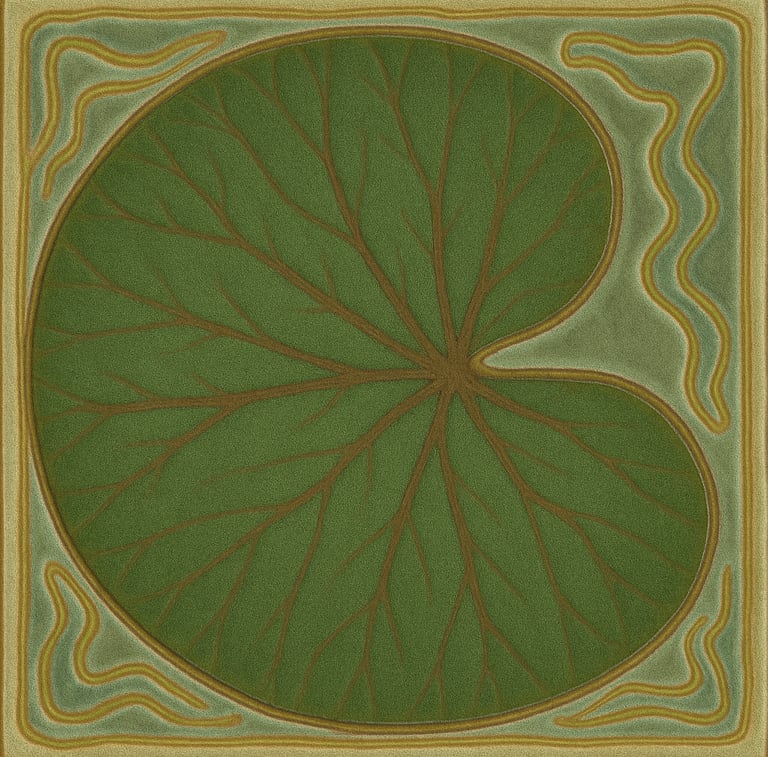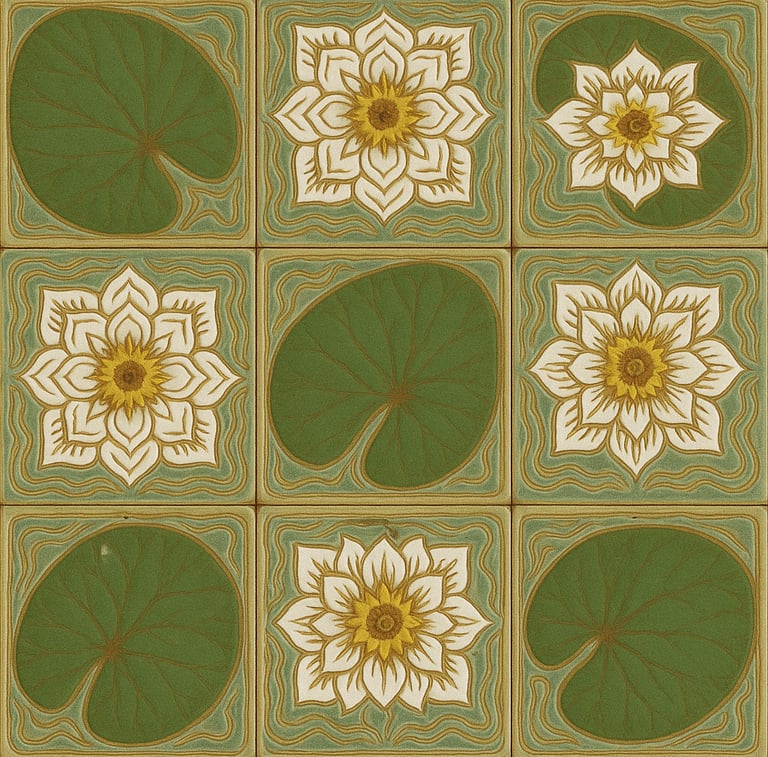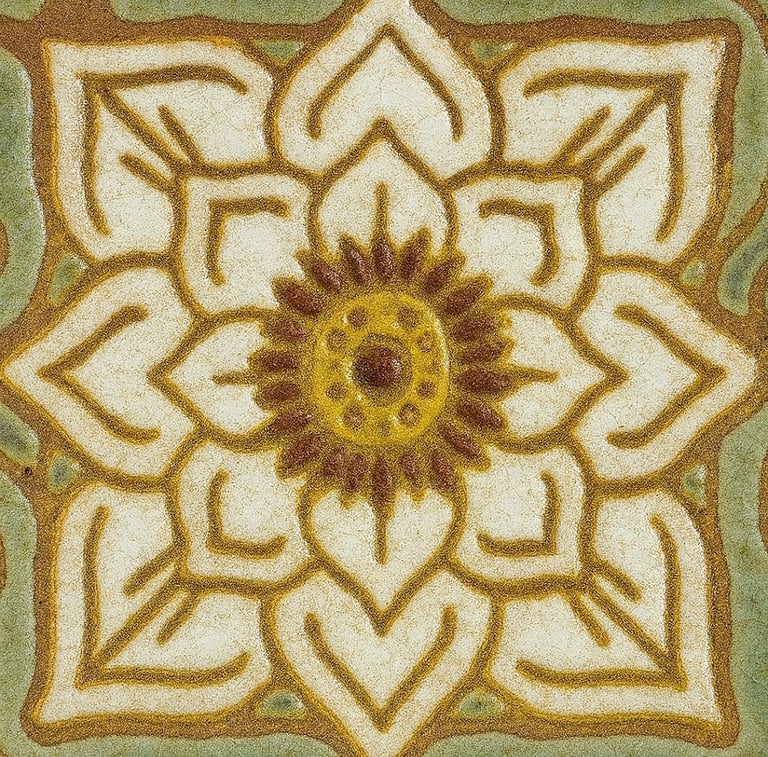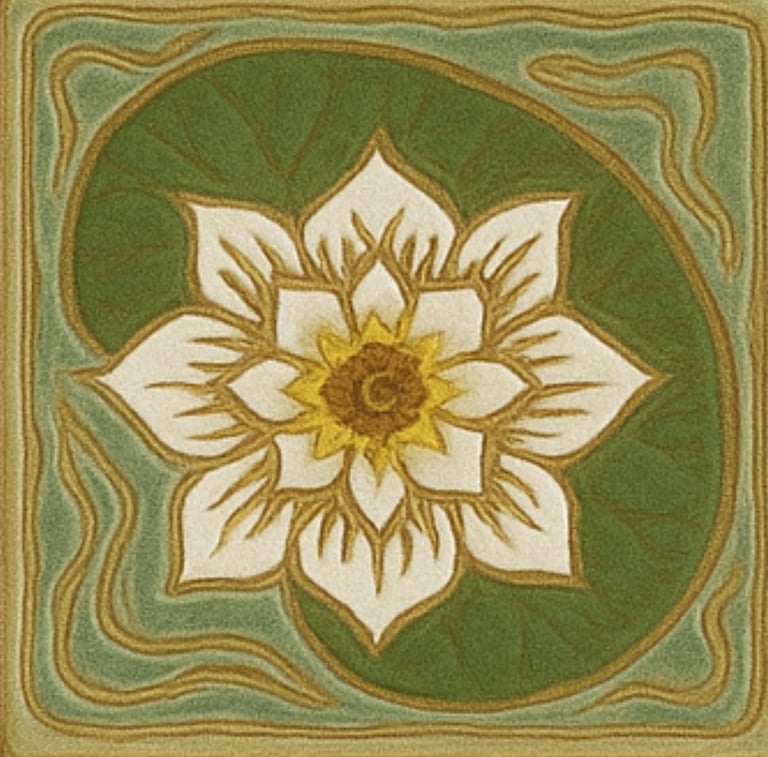Recreating Antique Lily Pad Tiles: A DIY Guide to a Timeless Art Nouveau Look
Learn how to recreate antique lily pad tiles with this step-by-step DIY guide, including materials, painting tips, and layout ideas.
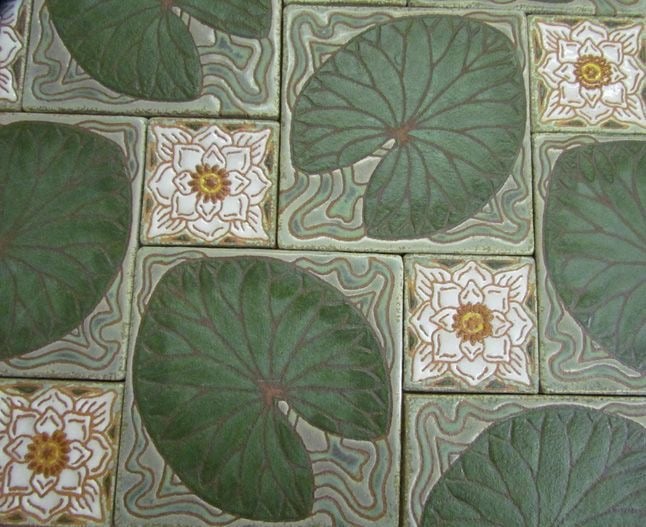

The Story Behind the Tiles
These stunning lily pad and flower tiles originate from the late 19th to early 20th century, most likely inspired by the Art Nouveau movement. With soft, organic lines, earthy glazes, and a love of natural motifs, this style flourished across Europe — from English tile factories to Hungarian bathhouses. The original tiles shown above feature:
Deep green lily pad leaves with realistic vein textures
Stylised white floral rosettes, framed by golden ochre linework
A rippling, embossed background pattern, evoking flowing water
This ceramic arrangement strikes a beautiful balance: naturalistic yet structured, rustic yet refined. These tiles were often used in fireplace surrounds, garden tabletops, or as statement walls in period homes.
Our Mission: Recreate the Magic by Hand
We loved the look and feel of these vintage tiles and wanted to recreate them at home — not as a copy, but as an homage. Our modern version keeps the original charm but adds slightly cleaner geometry and a soft matte finish. Perfect for those who want a handcrafted, artistic feature with heritage roots.
What You’ll Need
To recreate these tiles at home, you'll need:
Materials
Square ceramic bisque tiles (10–15 cm each, white or buff stoneware)
Underglaze paints:
Forest green
Ivory white
Golden ochre
Rust brown
Teal or pale turquoise (for background waves)
Clear satin or matte glaze
Pencil + carbon paper (for transferring designs)
Brushes: fine detail, medium flat
Embossing stylus or sgraffito tool
Optional: Clay carving tools (if working directly into unfired clay)
Optional Digital Resources
Our free printable template for lily pads, wave patterns, and floral motifs (available to download soon!)
Tracing paper or stencil sheets
Step-by-Step: How to Recreate These Tiles
1. Prepare Your Surface
Start with clean, bisque-fired ceramic tiles. Make sure they are dust-free and fully dry. You can also work directly onto raw clay tiles and fire them yourself later.
2. Transfer the Design
Use carbon paper or light graphite transfer to sketch your lily pad or flower pattern onto each tile. Alternate designs across the set to match the original repeating layout.
3. Outline the Forms
Use a fine brush or stylus to define the main outlines — the leaf edges, veins, petal shapes, and background waves. Keep your lines confident but organic.
4. Paint the Lily Pads
Use forest green underglaze for the main lily pad shape. Let it dry slightly, then layer darker or lighter greens along the veins to add dimension. Use rust or dark brown for vein accents.
5. Paint the Flowers
The waterflower tiles require a steady hand.
Fill the petals with ivory white.
Add golden ochre and rust details in the centre.
Use soft brushstrokes to add texture and shading around the edges.
Each flower can be slightly different — embrace the variation!
6. Add Background Waves
Mix a turquoise or teal wash with a tiny bit of brown or ochre. Paint the curving water ripple patterns around the main motif. You can outline them with a stylus or dark glaze to create the “embossed” look.
7. Glaze
Once fully dry, coat each tile with a clear matte or satin glaze. Avoid glossy finishes if you want to preserve the antique look.
8. Fire
Fire the tiles in a ceramic kiln to cone 06 (or as specified by your glaze/underglaze brand). The colours will deepen and set permanently.
Tile Layout Tips
Use a 3x3 grid (like the original layout) for small wall panels or tabletops.
For larger surfaces, repeat lily and flower tiles in alternating rows.
Leave a 1–2 mm grout gap between tiles for a traditional handmade look.
Alternative Approaches
Not a ceramicist? You can also:
Use these designs for tile painting kits
Print them as decals and transfer onto blank tiles
Stencil the design onto walls or trays for a faux-tile effect
Recreating antique tiles is more than a craft — it’s a way to connect to the artistic traditions of the past while making something personal and lasting. These lily pad and flower tiles are a tribute to nature, detail, and slowness — a perfect addition to any mindful, creative home.
Coming Soon:
📥 Printable template downloads
📸 Pinterest image + moodboard
📹 Video tutorial with full painting demonstration
